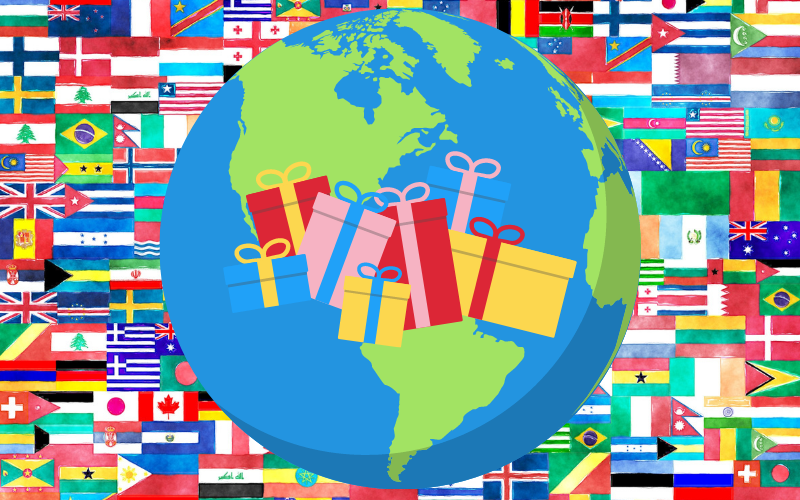
During the holiday season, the air is filled with excitement and anticipation, and a significant part of that joy comes from the tradition of gift-giving. While Santa Claus might be the most well-known figure associated with Christmas gifts, he is just one among many fascinating characters from cultures around the world who bring gifts during this festive time. In this article, we embark on a captivating journey to explore the history, traditions, and intriguing details of 12 Christmas gift bringers from around the World.
The List of 12 Christmas Gift Bringers of the World by Country
1. United States and Canada: Santa Claus

No exploration of Christmas gift bringers would be complete without including the legend of Santa Claus. This beloved figure has evolved over centuries, drawing from a fusion of diverse cultural traditions to become the embodiment of holiday joy and generosity that we know today.
The genesis of the modern Santa Claus can be traced back to the early 19th century, with a significant milestone being the emergence of the 1820s poem titled “A Visit from St. Nicholas.” This popular poem, also more commonly known as “The Night Before Christmas,” beautifully weaved together various elements of folklore and storytelling, breathing life into the character of Santa Claus.
It was during this period that Santa’s iconic attributes began to take shape. The vivid imagery of his red suit, jolly laugh, and traveling in a reindeer-drawn sleigh through the wintry night sky to deliver gifts, captured the imagination of both young and old alike.
2. United Kingdom: Father Christmas
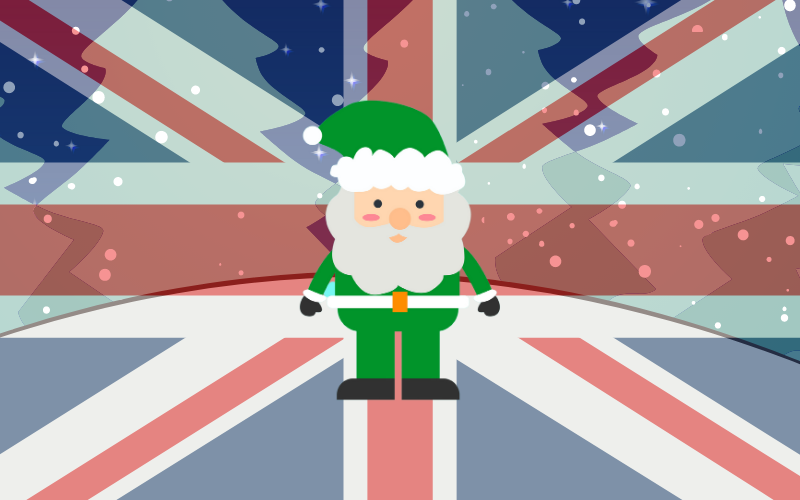
In the British Isles, the distinctive gift bearer is known as Father Christmas. This revered figure stands as a testament to the enduring magic of the holiday season. Donned in a vibrant green outfit, he perfectly captures the enchanting spirit of the season. His long snowy white beard demonstrates an air of wisdom and timelessness to his image.
The depiction of Father Christmas as a bearded man dressed in green represents a symbol of renewal, rebirth, and the evergreen spirit that pervades during the winter months. Father Christmas stands as a living emblem of the vitality that endures, even during the winter season.
Father Christmas, is known to have a cheery spirit and glowing aura. He continues to embody the captivating magic that fills the air during this time of celebration and camaraderie as he delivers joy and gifts to families.
3. Russia: Ded Moroz

Ded Moroz or “Grandfather Frost,” stands as the quintessential Russian counterpart to the beloved Santa Claus. He brings with him a unique aura that captivates the imagination and resonates with the heart of Russian culture. Ded Moroz, wears an elegant flowing blue coat that is said to glow in an ethereal beauty as he travels across Russia. His long beard and weathered appearance carry an image of timeless wisdom that commands respect and admiration.
Ded Moroz also carries a magical staff. The staff is a symbol of his mystical power and benevolent love. It is often represented with intricate carvings and celestial imagery, as he is known as a bestower of blessings and a guardian of the holiday spirit. It is said that by the wave of his magic wand, Ded Moroz weaves his spells of joy, gifting the land with a sense of unity and festive delight.
Ded Moroz is a cherished figure who ushers in the joys of the New Year celebrations. His arrival is often accompanied by his loyal companion, Snegurochka, the Snow Maiden, adding an element of romance to the festivities. Together, they embody the harmony found in the beauty of nature and the enchanting holiday magic, as they bring goodies and gifts to the people of Russia.
4. Italy: La Befana
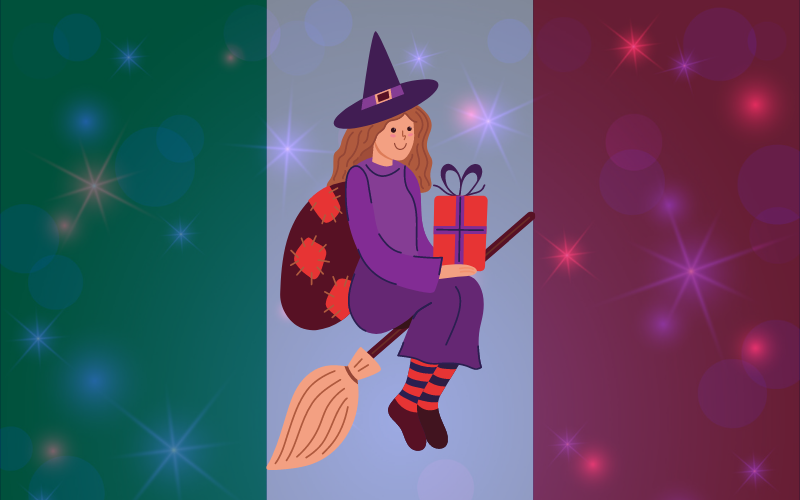
In Italy the legendary gift giver is known as La Befana. This figure is often described as an elderly witch woman, who takes to the night skies on her trusty broomstick to spread gifts and joy to children.
According to folklore, she was an ordinary woman who was visited by the three Wise Men on their journey to witness the birth of Jesus. They asked her for directions, inviting her to join them, but she declined to do her chores instead. She would soon become overwhelmed with regret and would set off on her own quest to find the baby Jesus, holding a broomstick in one hand and gifts in the other for the newborn Christ.
Though she never found the Christ child, La Befana’s heart remained bound to the spirit of giving. Each year, on the eve of January 5th (the Epiphany), she embarks on her mystical journey, visiting the homes of children. As she flies through the night sky, her broomstick leaves a trail of stardust, going from home-to-home to fill the children’s stockings and shoes with treats and surprises.
Read More Fun Facts
Learn more fun facts with Trivia Mastermind content.
5. Germany: Christkind
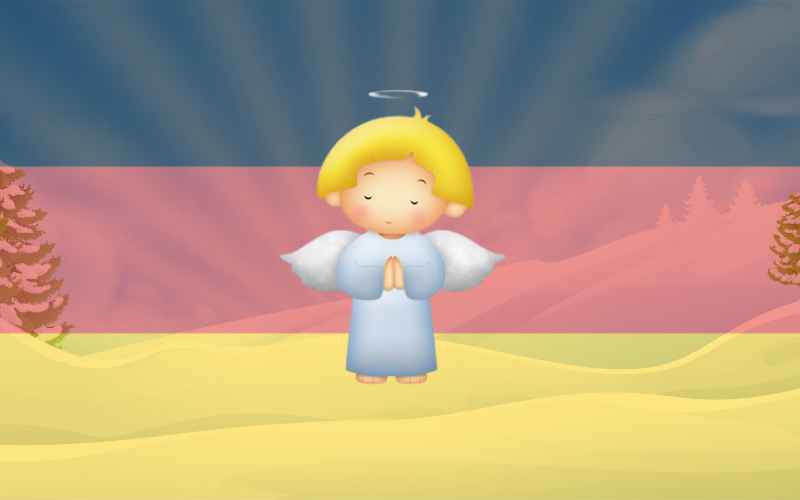
In Germany the revered gift giving figure is known as the Christkind, which translates to “Christ Child.” This celestial being is often portrayed with an ethereal presence much like an angel. The Christkind embodies the sacred significance of Jesus’ birth.
The Christkind is adorned in shimmering garments and a glowing halo. He is the transcendent messenger that bridges the gap between the earth and divine spirits. The Christkind serves as a symbol of hope and a reminder of the meaning of Christmas.
This angelic figure encourages acts of compassion, goodwill, and unity, while bringing gifts to families on the eve of Christmas. The Christkind’s aura radiates a sentiment of giving, sharing, and inspiration, so that communities come together and create an environment of love.
6. Spain and Latin America: Los Reyes Magos (The Three Wise Men)
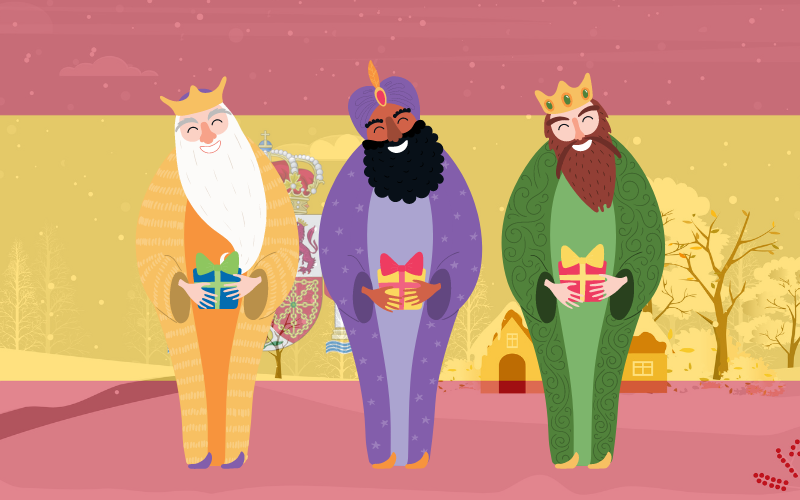
In Spain and Latin America, a timeless and cherished tradition takes center stage as the Three Wise Men, known as Los Reyes Magos, emerge as the celebrated gift bringers. These legendary figures are named Melchior, Caspar, and Balthazar. They grace the hearts and minds of children on the day of the Epiphany (also known as Three Kings’ Day), which takes place on January 6th.
Melchior, Caspar, and Balthazar, wear regal robes and bare precious gifts. They travel the streets and towns, guided by a celestial light, as they embark on their journey following the beckoning star that will bring them to the born Christ.
On the Day of the Epiphany, the children awaken to find gifts from the Three Wise Men. Families gather to share a feast, and celebrate the tradition.
7. Netherlands and Belgium: Sinterklaas

In the Netherlands and Belgium, Sinterklaas arrives as the bearded magical storyteller, riding in on his great white horse. Wearing his long regal robe, a bishop’s hat, and carrying a staff, Sinterklaas steps onto the land to spread his wisdom and kindness, surrounded by his helper Zwarte Pieten, a moor from Spain who wears a colorful outfit and arrives with a mischievous smile.
Sinterklaas parades through the streets on a horse while children wave and cheer. The tradition is much like a parade with music and festivities. Sinterklaas also carries a sack filled with special treats and surprises for the well behaved children.
8. Iceland: Jólasveinar (Yule Lads)
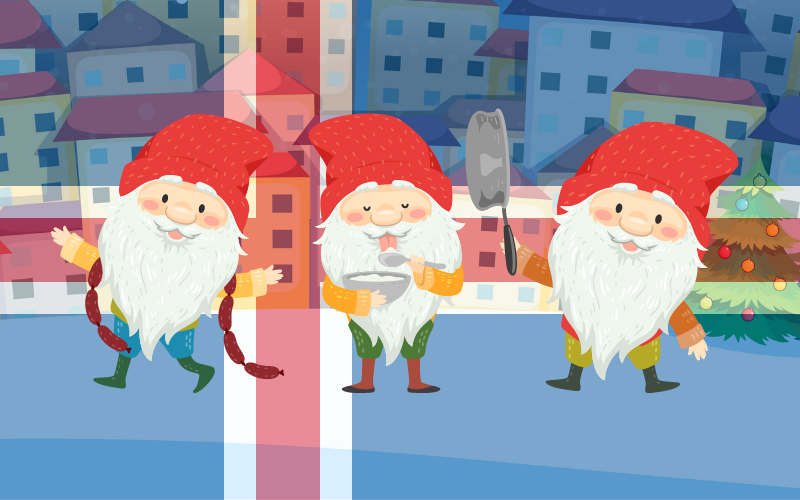
In Iceland, the traditional gift bearers are known as Jólasveinar or Yule Lads. They are a group of playful trolls that bring their own unique twist to the holiday season. They sneak into towns and villages on the 13 nights before Christmas, one by one, leaving their mark in the most curious ways. If you’ve been good, they’ll leave a little gift for you, like a small treat or a tiny toy. But if you’ve been naughty, they might leave you something disappointing, like a potato.
So each morning leading up to Christmas, there is a surprise left by the Yule Lad. Families then gather to share stories of these funny trolls and the surprises they’ve left. It’s like a magical countdown to Christmas, full of laughter and anticipation.
Play Trivia!
Challenge yourself and play trivia questions with answers and explanations.
9. Poland: Gwiazdor (Starman)
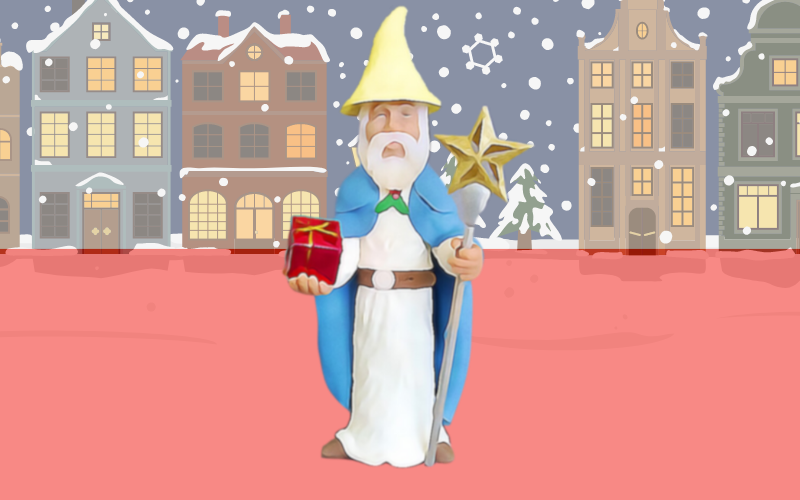
In Poland, on the night of Christmas Eve, Gwiazdor (the Starman), makes his appearance. Gwiazdor is like a messenger of happiness, dressed in a way that shines like a star itself. Sometimes, this figure wears the attire of an angel, to symbolize hope and kindness. Other times, Gwiazdor dresses up like a wise king, similar to the kings who followed the star to find baby Jesus.
Gwiazdor not only comes with gifts, but also, with a message of goodness. It’s a reminder to be kind, caring, and to share the holiday spirit. It’s a beautiful tradition that makes Christmas Eve in Poland truly enchanting.
10. Sweden: Jultomten
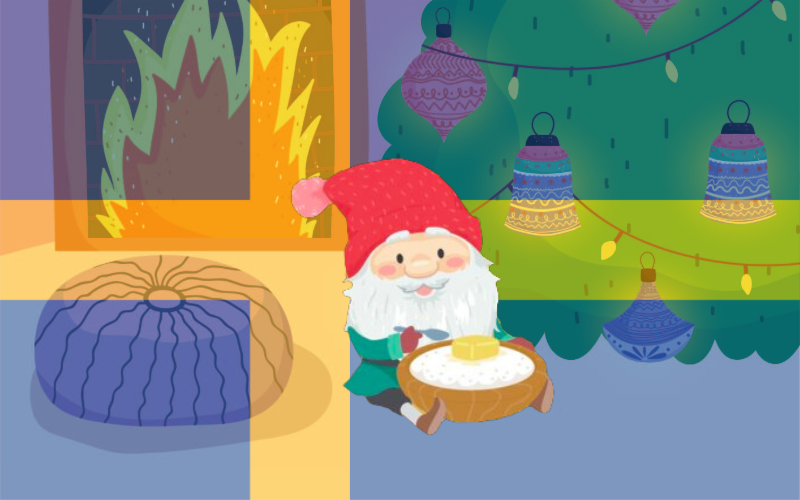
In Sweden, a special visitor known as Jultomten arrives to bring the magic on Christmas Eve and make the holiday, even more magical. He is represented as a friendly gnome with a long white beard, wearing a red hat and a warm coat.
Jultomten is a cheerful friend who travels from far away snowy forests to bring happiness. He is a messenger of laughter and smiles for the Children. Jultomten makes his entrance with a jingle of bells or a gentle knock on the door.
He might appear with a sack of presents, each one wrapped in colorful paper and tied with a bow. Jultomten is more than just a gift bringer; he’s a symbol of warmth and togetherness. His presence reminds everyone that the holiday season is a time for sharing, being kind, and cherishing the company of loved ones.
11. Finland: Joulupukki
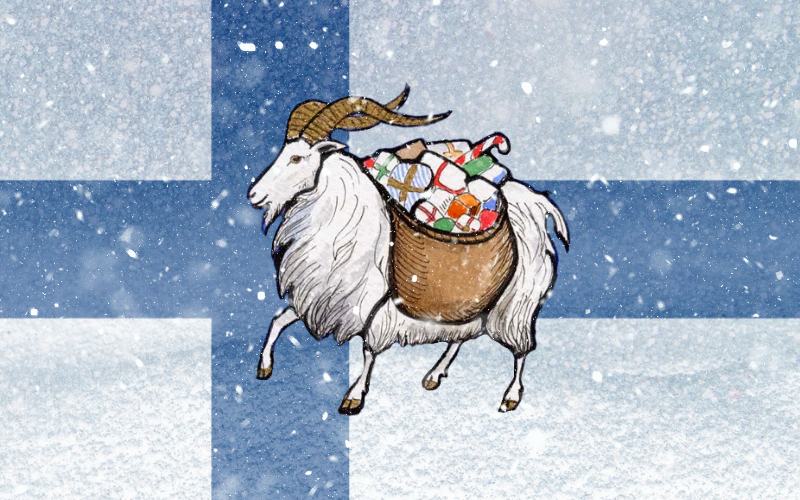
During the winter holidays in Finland, a unique figure takes center stage during the season: Joulupukki, the Christmas Goat. Imagine a creature that’s part goat and part Santa Claus.
Joulupukki is like a cheerful messenger from the North that wears a warm and furry coat. His appearance hails back to mythical tales, where creatures roamed the forests and mountains. Joulupukki visits homes with a sack of presents slung over his shoulder to deliver to the people.
Many times, someone from the local community will transform into Joulupukki by wearing a goat costume for the Children. They will receive little gifts from the Christmas Goat, much to their delight.
12. Japan: Hoteiosho
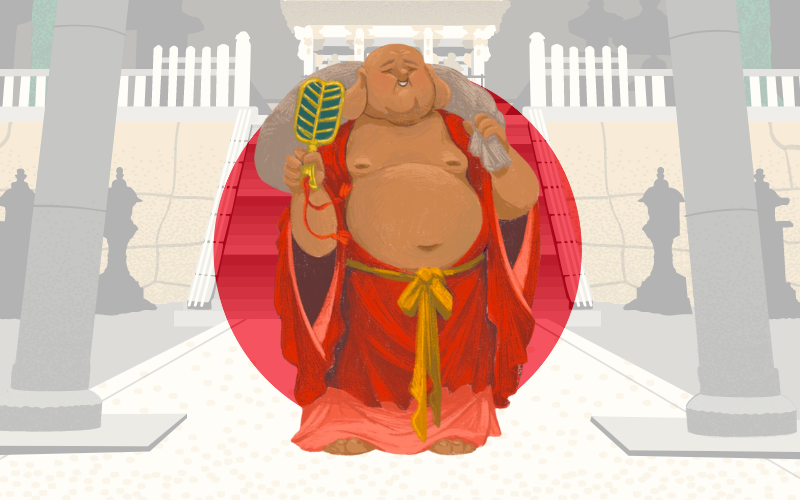
Japan offers its own unique character to the holiday season: Hoteiosho, the benevolent Buddhist monk. Hoteiosho appears during the New Year’s season.
Hoteiosho embodies the Buddhist virtues of generosity and kindness. His arrival signals a time of reflection and renewal while transitioning into the new year. He is dressed in the traditional attire of a Buddhist monk, carrying the spirit of mindfulness and compassion.
Hoteiosho travels from home to home, bringing gifts and the sense of spiritual well-being. His presence is a gentle reminder of the interconnectedness of all living beings and the importance of nurturing a harmonious lifestyle. In Japan, the New Year’s season is not just a time for festivities; it’s a time to welcome Hoteiosho’s wisdom and embrace the beauty of a new beginning, guided by the gentle teachings of a compassionate monk.
Conclusion:
The Holida season is a time of joy, love, and giving, and the diverse array of gift bringers from around the world adds an enchanting layer to this festive tradition. From the jovial Santa Claus to the mystical Ded Moroz and the kindly La Befana, each culture brings its own unique flavor to the holiday celebrations. As we gather with family and friends to exchange gifts and create cherished memories, let’s take a moment to appreciate the rich tapestry of global traditions that make the season truly magical.
Read More Fun Facts
Learn more fun facts with Trivia Mastermind content.
Play Trivia!
Challenge yourself and play trivia questions with answers and explanations.
Recent Posts
Step into a realm of nostalgia as we embark on a journey through the annals of pop culture and bid farewell to 35 recently obsolete technologies. In the ever-evolving landscape of innovation, certain...


